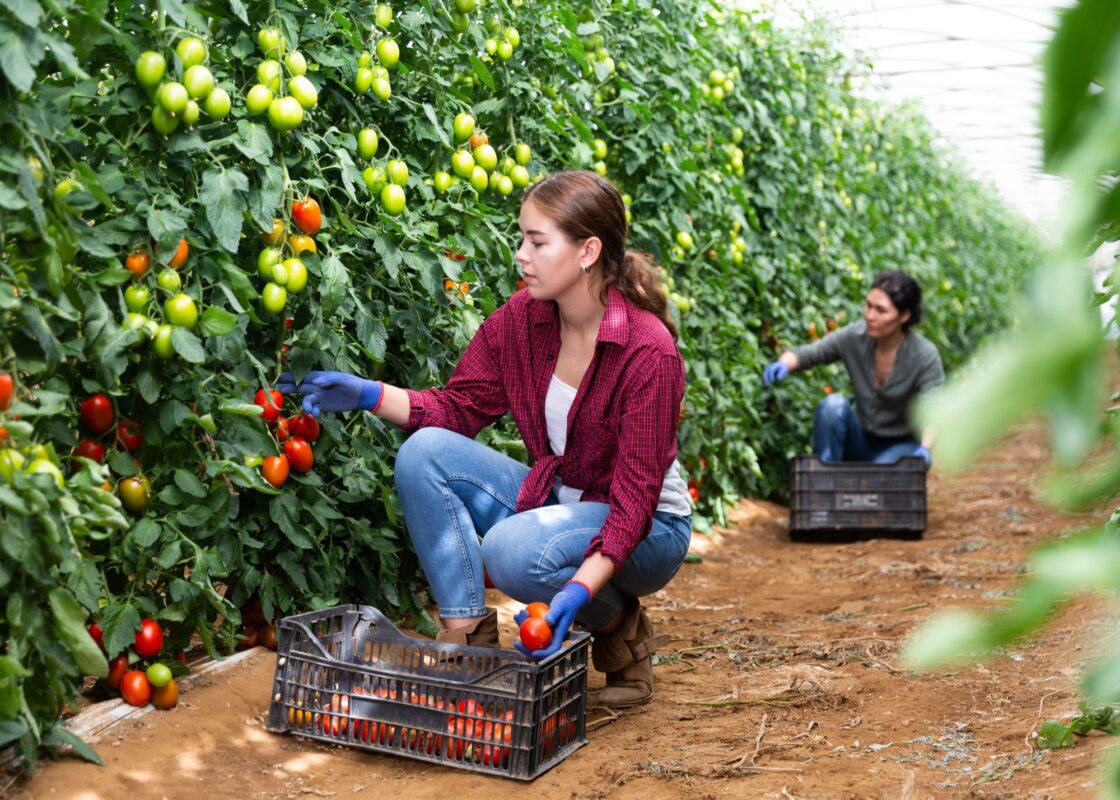This article is the third of four in a series on Seasonal Workforce Attraction and Retention.
Last issue we identified some ways employers can grab the attention of people looking for seasonal work. This time we will suggest how to reduce staff turnover and get the best productivity from those you employ.

The Harvest Trail Information Service funded by the Australian Government, has been operated by MADEC for almost two decades. During that time, we have seen the ups and downs of seasonal worker supply and demand, and have seen many different examples of how employers attract and retain workers. The suggestions in this series are taken from you – growers and employers across Australia who need seasonal workers. Learn from those who have succeeded.
Productivity and staff turnover
So, now you’ve got your workers – how do you get the best out of them, and keep them long enough to be worthwhile?
There are two parts to this equation – the first is to ensure your workers are functioning productively enough for your operation. The second is to ensure the good ones stay long enough to minimise costly staff turnover. The two are closely linked.
Put out the welcome mat
Seasonal workers have widely differing life experience. Some have rarely been outside their classroom, office, or darkened bedroom in front of a screen. While others may enjoy the outdoors – hiking, mountain-bike riding and camping – they may not be work-hardened. Others of course are seasoned campaigners, having undertaken physical work all their lives – sometimes even farm work.

The first couple of hours for a newbie arriving on a farm is the critical period that determines their likely success or otherwise. While the grower or their supervisor will be busy, taking a little extra time with a group at this point can save lots of wasted time later with unproductive or disengaged individuals.
A genuine, friendly greeting is a great start. Make them feel welcome and valued. Provide the new arrivals with a short background of the farm, what it produces and even a short history lesson if that is interesting. Take pride in your story, the same as you would with a website or social media post promoting your products. Just ten minutes extra might be enough to engage the workers to feel as though they have a part to play in the story you have just shared. The step above may seem like a waste of time, but for every worker that feels positive about starting their new job, small increments in productivity are multiplied for every week they stay.
A good induction is key
An induction should always be undertaken, even if the workers are provided by a labour hire contractor. Showing newbies where everything is located can save time-wasting questions and confusion later. And of course, the safety briefing is a legal requirement as well as common sense. Injuries, even minor ones, can waste an inordinate amount of time. If your new recruits are inexperienced in farm work, don’t assume they will immediately work out what is going on around them.

The following step is one that an amazing number of farms skip, and then wonder why their workers are unproductive or don’t stay. Take some time to SHOW your new staff HOW to do the job they have been employed to do. A verbal instruction or video is of value, but doesn’t come close to the impact or ability to absorb a message that a practical demonstration provides. Something as simple as showing someone how to stand when undertaking a task, how to hold a tool, or to wear a picking bag in a certain way, can improve the quality, speed and stamina of the workers.
With many seasonal workers having English as a second language, it is even more important. Provide them with practical tips and techniques that might be second-nature to you, but may not be obvious to others. If employees start with good habits and techniques they are going to learn quicker and be more productive earlier, than if they just guess. Once again, don’t assume they will just ‘work it out’.
Monitor progress, provide feedback
Consider labour like any other input – monitor progress! You wouldn’t use a new fertiliser, irrigation system or machine without checking out whether it is better than the old one. And so, it should be with new staff. Watch how they start, check their techniques, and see how they perform. If they need showing again, or in a bit more detail, consider how best to get the message across. Once again, a bit of time early can reap rewards later. Of course, if this instruction has to be one-on-one rather than as a group, that can be costly and best avoided.
Some employers will choose call the group together at the end of day one and provide more general feedback on the performance and techniques they witnessed during the work day.
Reward success
If you have workers that perform well, especially early in their employment – tell them! In fact, commending quick learners in front of a team makes them feel good, and sends the message to others that improvement is possible and is recognised.

Where production can be easily measured such as when picking fruit, some farms post ‘league’ or output tables. If all workers can see where they sit amongst their peers on the farm, and especially how productive the best workers are, it can be a strong enticement to improve. For privacy you may choose to only list by payroll number so workers only know their own position, but the impact can be the same.
It is not unusual for inexperienced staff to disbelieve how much production an experienced worker can achieve. A ‘league table’ can put that in perspective and can also show someone how much they improve as they gain experience. Once they start to move up the table it can be great motivator.
Dismissal – the last resort
For those that can’t or don’t perform to the standard needed by the farm, employers will be aware that as casual workers they can be dismissed easily. But after the investment in onboarding, it is usually more economical to implement strategies to improve their productivity than start all over again, even if they are only just at the minimum standard.
Everyone loves a freebie
Consider that seasonal workers like backpackers or grey nomads are away from home and largely working for the experience it provides. If the farm can provide them with a means to relax in each other’s company after work, the interaction and relationship-building can promote a team atmosphere and a positive vibe that spills over into work.

A simple weekly BBQ after work can be a very cheap way to build teamwork. Consider a workforce of ten casual workers, full time for a week – that’s a wage bill of over $10,000. Spending just $100 towards some sausages and drinks is just 1% of their wages and is tax deductible. Some farms close to town bring out pizzas. Any gains from feeling good about their employer and workplace is likely to be paid back in extra effort. With such a low cost of doing so there is little to lose, and the employer and their family may even enjoy the interaction too – many have before!
A little spot of paradise
There are also some practical measures that can entice workers to stay. On-farm accommodation is highly prized and does not necessarily require a big investment. A patch of grass, access to power and a basic ablution block is enough to satisfy many itinerant workers.
Grey nomads are often self-sufficient with their caravans or motorhomes, and a patch for a tent or minivan is enough for many backpackers. Whether a site fee is imposed is up to the farm, but a small charge is unlikely to deter campers. Again, a small investment here can provide a return in the form of reduced staff turnover as workers will be reluctant to leave pleasant accommodation they may not be able to replicate elsewhere.
Effort Leads to Reward
Staff turnover is expensive. Mid-season recruitment has a dollar cost as well as wasting valuable time. Having new workers start from scratch to build productivity part-way through the season is not only frustrating, but will reduce output and possibly cause the farm to miss market obligations or opportunities. Efforts undertaken to satisfy workers and reduce turnover is seen by successful farms as an investment. Many have proven that a little thought and effort can go a long way.
